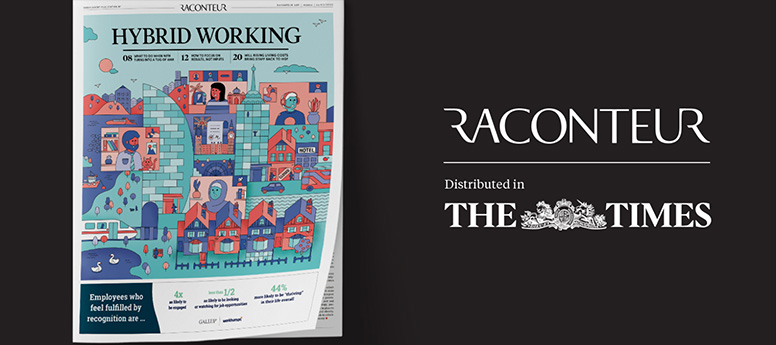
The Raconteur in The Times talk to Hubstar and Smartway2 about building the best hybrid work models
Many companies across the globe are now adopting a hybrid working model. These companies have realized that employees can be very productive even when working remotely. In addition, this work model can significantly help companies reduce operational costs. According to VentureBeat, 85% of employees want a hybrid work model.
Considering the incredible benefits that the hybrid work model offers, including flexibility, increased productivity, and improved efficiency, we can say that this work model is here to stay. And that’s exactly what we spoke to The Raconteur in The Times about in a recent feature article.
So, how can employers build an effective workplace for a hybrid future? Let’s take a look.
What are hybrid work models?
Hybrid work models allow employees to split their time between working in the office and working from home. A hybrid work model isn’t something new. However, it became more popular coming out of the pandemic when there was a need for social distancing, and companies had to limit the number of office workers.
Companies looking forward to creating a flexible workplace and boosting their productivity and efficiency should adopt a hybrid work model. This working model can make workers feel motivated while, at the same time, promoting company growth.
However, facilitating a hybrid work model can be challenging for many employers. Some of the challenges they are faced with include effective communication and collaboration. Facilitating communication among employees working remotely can be quite challenging for many companies. In addition, with little or no face-to-face interaction among employees, keeping the company’s culture alive can be difficult.
Different types of hybrid work models
There are several different models of hybrid working, including:
- Hybrid at-will: This model sees office workers choose which days to come into the office.
- Hybrid split-week: Here, companies assign specific days for on-site and remote work.
- Hybrid manager scheduling: This is where managers choose which days their team comes into the office
- Hybrid mix: This is a mix of all three models.
How to build your workplace for a hybrid future
Now that you have a better idea of how a hybrid workplace, well, works, let’s see how companies can build their hybrid workplace for a better future.
Improve the workplace experience
First and foremost, companies must ensure that they create a workplace that fits the needs of their employees. That can help offer the employees a better experience. A great workplace experience relies on:
- Comfort: Employees need to feel comfortable in the office physically, emotionally, and cognitively.
- Safety: They need to be safe and feel safe both physically and psychologically.
- Control: Employees should have reasonable control over where and how they work.
- Productivity: Employees should be empowered to focus and collaborate to stay productive.
A company must provide these key things to improve the employee experience. Hybrid working is all about flexibility and allowing your employees to work when, where, and how they want.
The key to providing the best employee experience is good communication and proactive management. Running hybrid teams can be different and challenging for many managers. That’s why managers need to create a hybrid plan that allows everyone to work flexibly together.
Redesign to boost creativity, communication, and collaboration
Changing your work processes is just one-half of the hybrid work equation. You also need to redesign your workplace to better fit hybrid work models. People generally come into the office for two main reasons: to work collaborate with coworkers or to get some focused work done away from the distractions of remote work. Collaboration is where companies really need to direct their focus.
A hybrid workplace should encourage better communication and collaboration between colleagues. The office should be a place where teams thrive on face-to-face collaboration and are energized by the social parts of working in-office.
Employees want to work in an office to be surrounded by people. That’s what most people miss when working remotely. So, social interaction must be on the top of your list when redesigning your office for hybrid working.
But how can you achieve that? Try dedicating part of your space to hot desking or desk hotelling while leaving the rest of your space for meetings, promoting collaboration and socializing. To get the most out of hot desking or desk hoteling, it’s important to make sure employees know how to book workstations before they get to the office so they can get right to work when they arrive.
Using a desk booking system that lets you create rules like limiting the number of times someone can book the same workstation can help encourage people to try out different areas of the office and prevent them from slipping back into traditional office patterns.
You can also repurpose space previously taken up by individual desks to create more dynamic spaces for collaborative work and socializing.
Use data and technology to your advantage
Companies that want to create workplaces for the hybrid future of work need to use data-driven tools and platforms that track and analyze utilization data. Knowing how often employees come into the office is crucial when considering whether or not to downsize your real estate portfolio. And if certain workstations or meeting rooms just aren’t being used regularly, you’ll know it’s time to try something new.
Smartway2 has a suite of powerful analytics and workspace utilization reports that can help you better craft your hybrid workplace.
With Smartway2, employees can easily book desks, meeting rooms, and AV equipment no matter where they’re working. Using data and technology helps boost collaboration, automate repetitive scheduling tasks, and optimize space utilization, creating a better hybrid workplace experience.
Read more about building a hybrid workplace
To learn more about planning your workspace for the hybrid future, be sure to read our recent piece published by The Raconteur in The Times.
And to learn more about how Smartway2 can help your business, get in touch to schedule a demo today.


